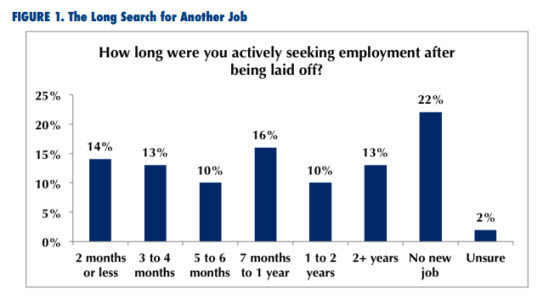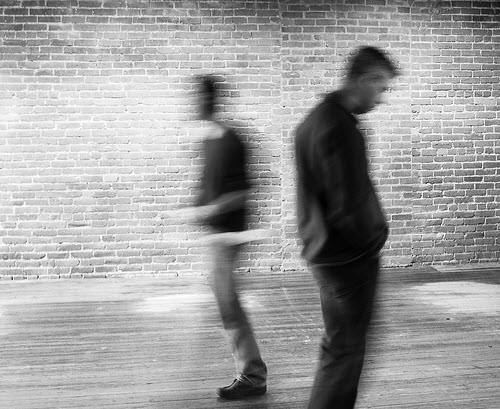“While the worst effects of the Great Recession are over for most Americans, the brutal realities of diminished living standards endure for the 3 million American workers who remain jobless years after they were laid off.” — Carl Van Horn, director of the Heldrich Center for Workforce Development at Rutgers University.
On the heels of positive news that the unemployment rate dipped below 6 percent for the first time since 2008, a recent study revealed the often overlooked, lasting impact the Great Recession has made on the long-term unemployed.
The Heldrich Center at Rutgers University published findings of their national survey conducted with 1,153 Americans, including 394 unemployed workers still searching for jobs, and unearthed new quantifiable data on the enduring financial and emotional plight of the long-term jobless.
Here are the top 3 findings from the report:
| 1. |
20 percent of workers laid off in the last five years still have not found jobs. |
| As of last August, 3 million Americans—nearly 1 in 3 unemployed workers—have been unemployed for at least 6 months. In addition, 2 million Americans have remained jobless for more than a year.According to the report, the percentage of unemployed workers who have been jobless for more than six months is now more than double what it was in the pre-recession era. Although long-term unemployment dipped from 46 percent in 2010, it is “still above the 26 percent level experienced in the worst previous recession in 1983.” | |
| 2. |
Only 1 in 5 of the long-term unemployed received help from a government agency when looking for a job. |
The study also uncovered that only 22 percent enrolled in a training program to develop skills for a new job, and 60 percent received no government assistancebeyond unemployment benefits.“These long-term unemployed workers have been left behind to fend for themselves as they struggle to pull their lives back together,” said Van Horn, who co-authored the study.While access to government assistance has been limited, outplacement services have become more affordable and accessible in just the past few years. Over 7.9 million jobs have been lost since the Great Recession, and companies determined to help more transitioning employees have relied on new offerings—like virtual outplacement and career coaching—to assist workers in securing their next opportunity more quickly. |
|
| 3. |
Of those who were able to land work, nearly half were making less than they had in their former jobs. |
| Aside from the lack of career search support, training programs, and job prospects, the challenges of the long-term jobless are further compounded by financial hardship. Due to their length of unemployment, about half of the long-term unemployed predict it will take 3 to 10 years for their families to recover financially. Another 1 in 5 say it could take even longer, or worse yet, that they will never fully recover. | |
Solutions & Additional Resources
7 ways the long-term unemployed are being “Left Behind”
More significant stats sourced from Rutgers’ unemployment study.
Six Tips for Unemployed Executives
Specific advice for leaders who are searching for their next post.
Learn More About Virtual Outplacement
It takes an average of 32 weeks for an unemployed person to get a new job.
Highly Educated, Unemployed And Tumbling Down The Ladder
This recent article investigates why workers with advanced degrees still find themselves underemployed or jobless in this new economy.

